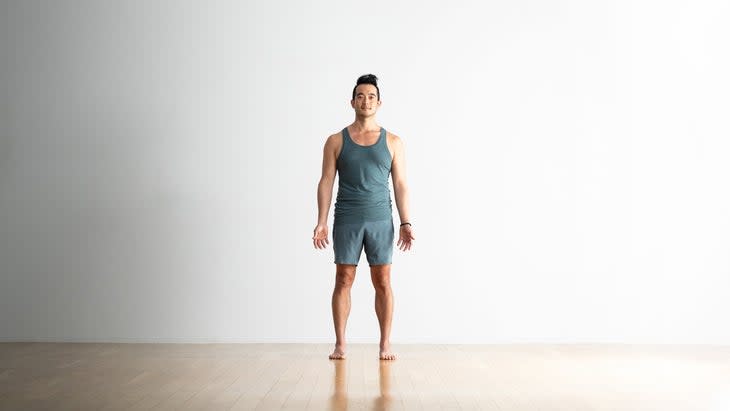The One Thing You Need to Know if You Experience Low Back Pain in Yoga
This article originally appeared on Yoga Journal
You’ve probably heard yoga teachers cue “bring your big toes together” in standing poses so many times that you instinctively fall into that position without even contemplating it--or how it feels in your body. And if you’re a yoga teacher, you were taught this cue as traditional and correct.
Yet if you or your students experience pain, strain, or discomfort in the low back during or after yoga, following this instruction can actually create more harm, especially if you’re newer to yoga and working on building up your strength, balance, and posture.
The one cue you need to know to ease low back pain in yoga
There can be countless causes for low back issues, including muscle strain, hip flexor tightness, sacroiliac joint derangement, poor posture, spinal alignment, herniations, and other physical conditions. Each concern requires your attention. Don’t ignore your doctor’s recommendations, but also maintain awareness of your body and make specific adjustments to your yoga practice.
There is a simple adjustment that can often help alleviate--or at least not aggravate--low back pain and may bring you some relief: Try taking your feet hip-distance apart.
When we stand with our big toes touching in common poses such as Tadasana (Mountain Pose) and Utkatasana (Chair Pose), it’s hard to find equal weight distribution to support the load on our low back. Without constant body awareness and mindful attention, the pelvis and spine can become misaligned as your body attempts to compensate.
When we instead take our feet slightly wider, with the hip bones stacked over the ankle bones, it becomes easier for our entire structure to resist gravity. With better posture, we can more easily balance the weight between our feet and engage our core in a way that supports a neutral spine. This can help us develop the postural awareness to combat spinal misalignments such as lordosis (an anterior pelvic tilt) that can, over time, cause even more strain to the low back.
The adjustment to your stance is not a fix for your pain, but it may help you come to class without inviting more pain into your practice.
How to find a safe stance if you experience low back pain
It might sound deceptively simple to know what “hip-distance apart” means in your body. The first few times you take your feet away from one another in these poses, take a moment and explore what brings you a sense of stability and relief.

1. Feet in line with your hip points
Bring your awareness to your hip "points," or anterior superior iliac spine of the pelvis (ASIS), which are the bony parts on the front of your hips that protrude a little. If you imagine drawing a line straight down from these two bones, you should be staring at the midpoint of each of your ankles.
2. Use a block
If you have a block, keep it handy and place it between your feet. If you find that the block doesn’t match your hip distance, set the block aside but keep it within sight as a reminder to adjust your feet so your big toes don’t touch.
About our contributor
Jenny Clise has been teaching yoga since 2012. Her classes are inspired by many schools of yoga, but her favorite style of yoga to teach is alignment-based flows. She is an avid traveler and leads retreats around the world. She is also the author of the yoga e-book BLOCKASANAS. To learn more about Jenny, her classes, or upcoming events, check out JennyClise.com or follow her on Instagram @jennyclise.
For exclusive access to all of our fitness, gear, adventure, and travel stories, plus discounts on trips, events, and gear, sign up for Outside+ today.

